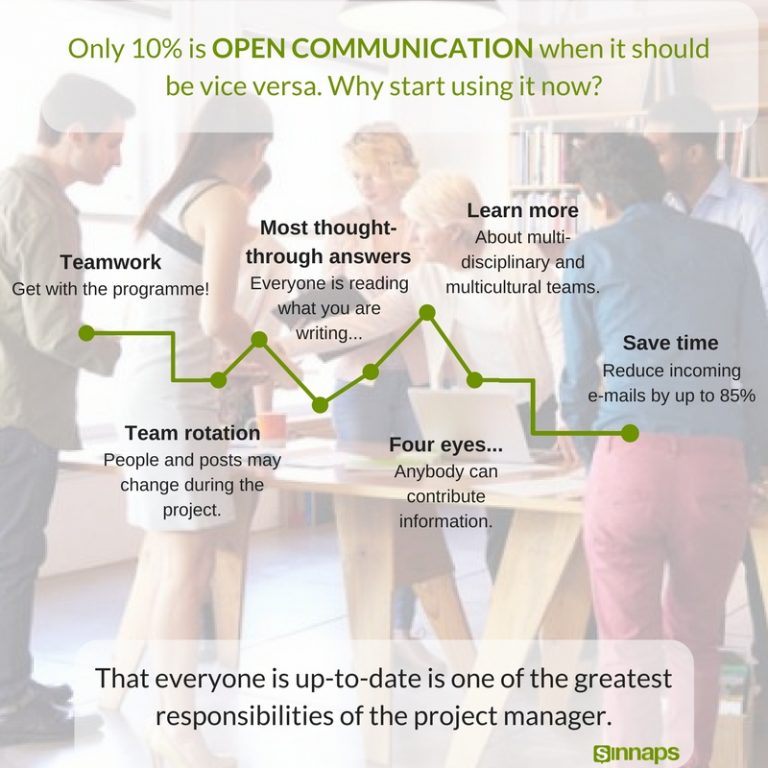In the same way that a project management plan is created to outline how the project will be managed, a scope management plan is made to define how the scope of the project will be managed.
In this article, you will learn about what to include in a scope management plan and how you can create your own using a Sinnaps project management template.
A scope management plan is crucial for controlling the scope of a project. It forms part of the overall project plan and outlines how the scope will be defined, developed and controlled. The project scope statement is at the centre of the project scope management plan.
What does Scope Management Plan include?
An effective scope management plan will capture the nature and scope of project management and will include the following points from the project scope checklist:
- Requirements: The identification of the project scope requires the identification of the project requirements. In this part the stakeholders and clients are contacted, meetings are held and any requirements that the project is expected to meet our identified. This process should be in-depth and cover all aspects of the project. There are usually several requirements in a project and missing even one small thing can greatly affect the overall project.
- Stakeholders: Project scope management processes need to include the stakeholders to a project include anyone that is involved and affected by the result of the project. This can include team members, the project manager, sponsors, the client and any other types of stakeholders. It is important to identify them in the project scope management plan.
- Scope Statement: The scope statement is a document within the scope management plan that outlines the project as a whole. It is the centre of the plan. It is seen as a binding agreement between the client and project team describing the project scope, deliverables, assumptions and limitations to the project.
- Work Breakdown Structure: In project scope planning, the work breakdown structure, also known as WBS, is the breakdown of the project into tasks or activities. This is the base of project management and was in the structure each activity is analysed and monitored throughout the project life-cycle. It is also referenced against the project schedule and budget, which is known as earned value management. In the scope management plan the work breakdown structure should include a list of all the resources needed, labour, tools, outsourcing etc.
- WBS Dictionary: The WBS dictionary acts as a support for the work breakdown structure section. It lists the identification code, work description and people responsible for each task or activity. It can also include the start date, budgets, specific milestone or anything else related to the individual tasks.
- Roles and Responsibilities: Every task and activity has a specific individual or team assigned to it. This can be anyone on the project team. It is important to include the specific roles and responsibilities of each person in the scope of development of the project so that people can become aware and know what is expected of them.
All about Project Scope Management
- Project Scope Statement
- Project Scope Example
- Scope of Work in Construction
- How to Prevent Scope Creep Project Management
- Project Scope Management
- Project Scope Definition
- Scope Creep Example
- Scope Planning
- Scope of Work Template
ONLINE FREE PROJECT MANAGEMENT COURSE
Lesson 5 – Communication: How to get the team moving at cruising speed.

- Deliverables: The deliverables of the project are also known as the objectives or goals. These are normally physical deliverables such as a website, a report etc. They can also be intangible goods such as the improvement of the value chain process. Deliverables represent why the project has been requested in the first place. It is essential to identify the deliverables in the plan so that they can be agreed upon by all stakeholders.
- Stakeholder Acceptance: For a scope management plan to be fully completed, stakeholder acceptance is required. This is a key part of the scope definition process. After the deliverables have been identified as well as the work breakdown structure, stakeholders are consulted and when the deliverables are approved the processes of the project are formed. Getting stakeholder approval at this stage means that everyone is on the same page in terms of what
 outcome the project will reach.
outcome the project will reach.
- Scope Control: Identifying the scope of the project in detail is worth the time invested. The scope control process needs to be put in place as change is constant and being prepared for potential downfalls is crucial. School control helps to avoid scope creep and determines the scope of risk management, which refers to tasks taking longer than initially planned. Procedures should be outlined clearly with regards to how any changes or problems will be addressed.
How to create a Scope Management Plan?
Sinnaps is an online project management software that presents effective tools for you and your team to use when determining your project management scope of work and planning the scope of business management. Tools such as a live in-chat feature and a project wall greatly benefit communication which is essential in the scope management process.
Project management templates, including a scope of work template are also available and can be exported to Excel and modified to your specific project scope checklist. Other tools include test mode, critical path, KPIs and more.
Create Simulations in Test Mode with Sinnaps
Overall, a scope management plan will benefit your project and its objectives greatly. It is crucial to keep everyone on the same page when scoping out a project and to manage everyone’s expectations effectively which is exactly what a project scope management plan will help you do.

